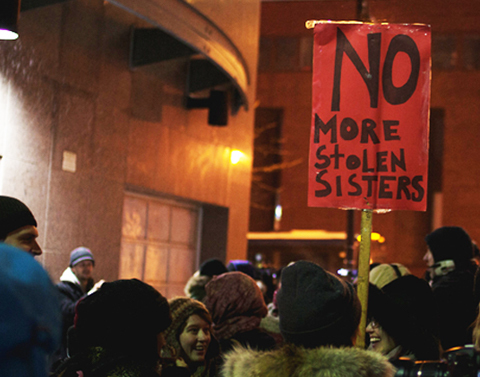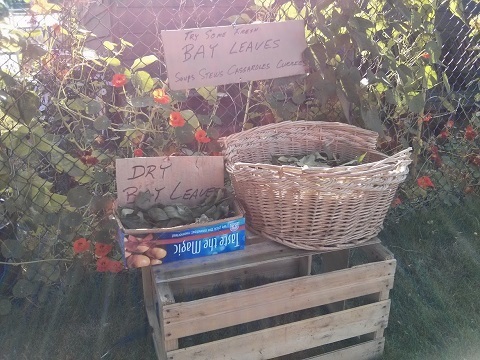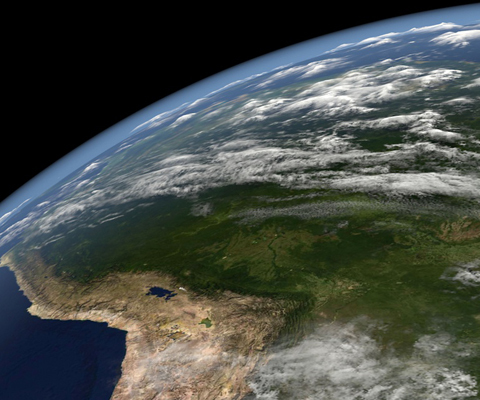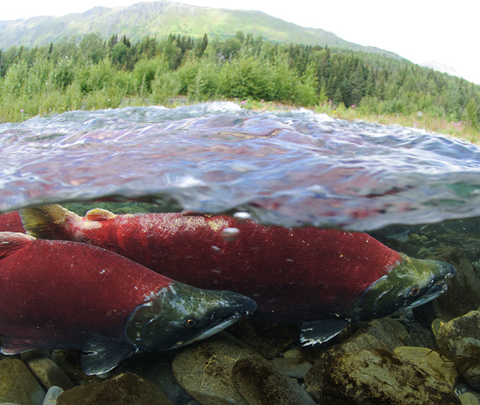David Suzuki's Blog, page 26
October 6, 2016
Confronting the crisis of violence against Indigenous women and girls in Canada

(Credit: Howl Arts Collective via Flickr — Edited)
In late September, Inuit artist Annie Pootoogook died tragically in Ottawa. Pootoogook was an award-winning illustrator from Cape Dorset, Nunavut. Her ink-and-crayon depictions of everyday life in the north -- families sitting to eat a meal of seal meat or shopping at the Arctic co-op -- received international acclaim. In contrast to the idealized vision many Canadians have of the north, of majestic rock and ice landscapes or charismatic wildlife like polar bears, Pootoogook's drawings often reflected the crushing poverty northern families face and its devastating impacts on their health and well-being.
Ottawa police believe Pootoogook's death is suspicious -- she may have been the victim of foul play. If so, Annie Pootoogook is yet another Indigenous woman to die violently in Canada.
Indigenous women and girls are at least three times more likely to experience violence than non-Indigenous women and six times more likely to be murdered. On any given day, thousands of First Nations, Inuit and Métis women and children are living in emergency shelters to escape abuse (though on-reserve shelters remain woefully underfunded).
The RCMP hasn't kept accurate statistics on the number of murdered or missing people, but Indigenous women's organizations and affected families have reported hundreds of cases of loved ones who have been victims of violent crime. After years of indifference and inaction, Canada's government has finally launched an inquiry into the many lives lost to violence.
Although the national inquiry into murdered and missing Indigenous women won't investigate cases police previously examined, it will look at broader factors that put Indigenous women and girls at such great risk. According to the UN Committee on the Elimination of Discrimination Against Women, this includes institutional racism, social and economic marginalization and inadequate access to affordable housing so women can escape abusive relationships. Police forces have often failed to deal with violence against Indigenous peoples, and officers themselves have been implicated or charged with assaults and sexual abuse.
Human-rights organizations such as Amnesty International and Kairos have also drawn attention to resource development in Indigenous territories, where the influx of transient workers -- along with money, alcohol and drugs from outside the community -- puts Indigenous women at risk of aggressive harassment and violence by men. As environmentalists, we often emphasize the impacts of mining or oil and gas development on wildlife and ecosystems but ignore the staggering social consequences for Indigenous communities, especially women. Amnesty International's research on the social impacts of resource development in northeast B.C.'s booming Peace Region has uncovered numerous accounts of attacks on women and girls, including "domestic violence, encounters with strangers that ranged from aggressive harassment to brutal violence, including unsolicited offers of drugs and money for sex, sexual assault and gang rapes."
These stories are heart-breaking, but the response from Indigenous peoples brings hope. One such grassroots effort is the Moose Hide Campaign, a growing movement of Aboriginal and non-Aboriginal men dedicated to ending violence against women and children, through education and peer support, encouraging men to develop healthier relationships with the women in their lives.
The Moose Hide Campaign was created by a young First Nations girl named Raven Lacerte and her father, Paul, in British Columbia. Working with First Nations hunters, they have distributed more than 250,000 small moosehide squares to communities across Canada -- encouraging men to wear the pins as symbols of their commitment to be accountable for their behaviour and to reject violence. What makes the campaign particularly poignant is that Raven and her father made the first pins from the hide of a moose they harvested near the infamous Highway of Tears between Prince George and Prince Rupert, where dozens of Indigenous women have gone missing or been found murdered.
The inquiry into the crisis of murdered and missing Indigenous women and girls is long overdue and is a testament to the hard work and leadership of Indigenous women and communities who have spent decades calling for an inquiry. It will proceed over the next few years and will make recommendations to governments, police and other agencies. We must also take personal action to end violence by participating in initiatives like the Moose Hide Campaign, which bring people together to promote healing. These are important steps for all Canadians to embrace if we are to advance reconciliation.
Hey! Want more DSF? Join David Suzuki on Facebook
October 5, 2016
Markham opens Canada's 1st municipal milkweed nursery
MARKHAM, ON - October 4, 2016 - Monarch butterflies and pollinators now have another new home in Markham. Mayor Frank Scarpitti, Council Members, David Suzuki Foundation and students from St. Patrick's Elementary School officially opened Canada's first municipal milkweed nursery at Milne Dam Conservation Park. The nursery will provide a habitat and vital food source for monarch butterfly caterpillars for years to come.
The Mayor invited the public including local students to see the 800 common milkweed plants that were planted in partnership with the David Suzuki Foundation this past May. The nursery will grow seeds to plant more milkweed across the City and be a home to support the monarch butterflies' annual return from Mexico. The milkweed is the only plant that monarch butterfly caterpillars eat from and is a critical plant to support the species' declining population.
"I am proud to report that the creation of this nursery is the first of its kind hosted and supported by a municipality in Canada," said Mayor Frank Scarpitti. "The City of Markham is creating habitat space and vital food source for monarch butterflies and other important pollinators to help them thrive."
"Monarch butterflies need our help now more than ever, and the City of Markham is leading the way," said Jode Roberts, Manager of the David Suzuki Foundation's Got Milkweed and Homegrown National Park projects. "In addition to establishing the milkweed nursery, Markham's commitment to create more space for pollinators has brought the city to the forefront of one of the most exciting conservation efforts in North America."
The milkweed nursery furthers the City's commitment to provide spaces for pollinators like monarchs. Butterflies, together with bees, birds, beetles, and other pollinating animals help to support up to 75 per cent of world's food crops. As pollinator and butterfly populations decrease, so does the production of much of our food.
The opening of the milkweed nursery is part of a series of actions, endorsed by Markham Council when the City declared itself as Canada's first monarch-friendly city. Since the declaration in April 2016, the City has established one of two pollinator-friendly spaces, held workshops under the Markham Homegrown program and distributed milkweed seeds at a number of community events across the City. Markham will continue to create more naturalized spaces in parks, community centres and areas suitable for pollinators, as well as engaging residents by encouraging them to plant milkweed seeds this fall.
- 30 -
Markham Mayor Frank Scarpitti: fscarpitti@markham.ca or 905-475-4872
Media inquiries / interview requests: Dennis Flaherty, 905-415-7520 or dflaherty@markham.ca
David Suzuki Foundation media inquiries: Jode Roberts, 647-456-9752 or jroberts@davidsuzuki.org
About Markham: Markham, a municipality with 350,000 residents centrally located in the Greater Toronto area, is home to over 400 corporate head offices and more than 1,100 high tech and life science companies. Founded in the 1790s, today Markham is Canada's most diverse community, enjoys a rich heritage, outstanding community planning and services, and a vibrant local economy. Markham has received the Excellence Canada Gold Award for Organizational Quality & Healthy Workplace, and multiple heritage and environmental awards.
About David Suzuki Foundation: David Suzuki Foundation is a Canadian non-profit environmental organization dedicated to finding solutions through science-based research, public engagement and policy work.
Hey! Want more DSF? Join David Suzuki on Facebook
October 3, 2016
How to create social capital in your neighbourhood

Sharing the harvest is a simple way to build social capital in your community. (Credit: Lindsay Coulter)
What kind of insanity must it be to confront that which we have not a hope of besting? And on the other hand what kind of sanity can we possibly claim if we don't? Sister Joan Chittester
Don't look for heroes to fix this mess we're in. Look in the mirror. Then ask:
What are my gifts?
What are my talents?
How can I take a giant leap to encourage friends, family and neighbours to take action?
The Heart of Sustainability: Restoring ecological balance from the inside out, by Andrés R. Edwards, asks these questions and many more, like:
What have you been called to do in your lifetime?
What motivates you?
What are the values that will guide us to the compelling future we long for?
Edwards suggests these ingredients (I love a good DIY recipe):
Compassion
Openness
Understanding
Regeneration
Action
Gratitude
Empathy
I'd also add "fun." People will join (and stay) with your community garden, book club or workplace green team if it's not out of guilt or worry.
How can I start?
Build social capital! Put a bench or chairs or tree swing on your boulevard, front yard, garden or laneway.
People want to experience true belonging within their communities. And anyone can work to bring people together! You are enough -- and one person does have power.
Possible side effects may include:
Meeting your neighbours
Starting a trend (a tree swing per block!)
Connecting with like-minded people
Making new friends
Feeling less isolated
Then what?
Take some time to observe how people use the space or artifact.
If people stop to drink coffee or read a book, maybe you want to add a Little Free Library (or, work together and host it with the neighbours a few houses down)? If children can't walk by without testing the swing, maybe add a chair so parents can rest, or a mason bee house on the tree to observe pollinators in action.
The smallest of gestures can help people experience their community in a deeper and more meaningful way.
Share an example of social capital already at play in your neighbourhood and what value it adds.
Sincerely,
Lindsay Coulter, a fellow Queen of Green
Hey! Want more DSF? Join David Suzuki on Facebook

Federal carbon price marks the first step toward a clean energy economy for Canada
VANCOUVER - Today's announcement that the federal government will introduce a national carbon price beginning in 2018 marks the beginning of a much needed national climate action strategy. While the majority of Canada's economy is already subject to some form of carbon pricing, this move by the federal government will ensure provinces and territories move forward together.
The federal government will still need, however, to rely on additional policies to reduce emissions to meet Canada's 2030 targets, given the modest carbon price compared to existing provincial policies. These additional emission reduction approaches should include regulations to phase out of coal-fired electricity over the next 10 years, a national requirement for zero emission vehicle sales, investment in renewable energy and public transportation infrastructure and the elimination of subsidies to the fossil fuel industry, which act in direct opposition to a price on carbon.
"A national carbon price is an essential foundation for an effective Canadian climate action strategy, but additional policies are needed to uphold Canada's international climate commitments," said Ian Bruce, director of science and policy for the David Suzuki Foundation. "Today, Canada joins the ranks of leading nations including the UK, Denmark and Sweden that have a price on carbon and have boosted renewable energy within their borders."
Funds from the national carbon price will remain in the provinces and territories where they are generated and the price will be revenue neutral for the federal government, according to the announcement. "For this policy to be truly effective, a portion of the funds raised should be reinvested in clean technology and renewable energy projects and infrastructure," Bruce said.
"A carbon price provides a clear market signal that makes clean technology more affordable and polluting technologies more expensive," Bruce said. "But to accelerate the shift to a clean economy, it is critical to direct some of the money raised into projects that will further drive down emissions and lay the foundation for a clean growth century."
Polling research of Canadians conducted by the Environics Institute beginning in 2008 suggests that 61 per cent support a price on carbon emissions. Strong opposition to this approach, on the other hand, has fallen from 28 per cent to 17 per cent.
Media Contact:
Steve Kux, David Suzuki Foundation: 604-374-4102
Hey! Want more DSF? Join David Suzuki on Facebook

Christie Crawlfest: bikes, butterflies and bees

Last Sunday, thousands of Torontonians joined us for a sunny day in Christie Pits Park for the Christie Crawlfest, a daylong community festival hosted by the David Suzuki Foundation, The Laneway Project, Friends of Christie Pits Park and Bells on Bloor.
The event celebrated local art, food and music and featured a memorable Lemon Bucket Orkestra performance that started atop a playground climbing structure before winding through the park, local streets and laneways. Hundreds of cyclists completed a victory lap around the new Bloor Street bike lanes. The park was home to a pop-up adventure playground -- a kids-only section that included space to roll tires down a big hill. A pop-up art market offered wares from dozens of local artists and crafters. Nearby Willowvale Lane hosted art installations and dance classes. As always, we had delicious food and drinks from some of the city's top chefs. And the sun shone all day!
Check out the photo album below.
Big thanks to all the volunteers, chefs, laneway crawlers, artists, dancers and musicians who made the day such a joy. And special thanks to our event sponsors, Alex Beauregard-Freeman Real Estate Ltd., Spirit of Math, Steam Whistle Brewing, Southbrook Winery and our national program sponsor Nature's Way. Without your support, we couldn't make this community-led magic happen.
CHRISTIE CRAWLFEST 2016 PHOTOS:
Hey! Want more DSF? Join David Suzuki on Facebook

September 29, 2016
Make your life easier: Order greeting card packs now!

The holiday season is coming up fast. Beat the rush and pick up your 12-pack of unique David Suzuki Foundation greeting cards. They're perfect for friends, family, neighbours and colleagues. And buying them helps support our work. Get yours today!
Hey! Want more DSF? Join David Suzuki on Facebook

Carbon dioxide: Pollutant or plant food?

(Credit: Stephen Thomas via Flickr)
Life evolved to live within limits. It's a delicate balance. Humans need oxygen, but too much can kill us. Plants need nitrogen, but excess nitrogen harms them, and pollutes rivers, lakes and oceans. Ecosystems are complex. Our health and survival depend on intricate interactions that ensure we get the right amounts of clean air, water, food from productive soils and energy from the sun.
Climate change deniers either wilfully ignore or fail to understand this complexity -- as shown in their simplistic argument that carbon dioxide is a beneficial gas that helps plants grow and is therefore good for humans. Industry propagandist Tom Harris of the misnamed International Climate Science Coalition writes, "Grade school students know CO2 is not pollution; it is aerial fertilizer." He adds, "Increasing CO2 levels pose no direct hazard to human health." The unscientific Heartland Institute-ICSC study he references claims, against all evidence, "Carbon dioxide has not caused weather to become more extreme, polar ice and sea ice to melt, or sea level rise to accelerate."
It's a facile argument, designed to downplay the seriousness of global warming and its connection to CO2 emissions and to promote continued fossil fuel use. Deniers like Harris and Patrick Moore in Canada extoll the virtues of burning coal, oil and gas.
It's deliberate deception, rather than an outright lie, as most plants do require CO2 to grow. But overwhelming scientific evidence shows that, along with other greenhouse gases, CO2 causes ocean acidification and fuels climate change, putting humans and other life at risk.
Even its benefit to plants is more complicated than deniers let on. As the website Skeptical Science states, "Such claims fail to take into account that increasing the availability of one substance that plants need requires other supply changes for benefits to accrue. It also fails to take into account that a warmer earth will see an increase in deserts and other arid lands, reducing the area available for crops."
A Stanford University study, published in the Proceedings of the National Academy of Sciences, illustrates the claim's lack of scientific validity. After observing plants grown in California over 16 years, under altered CO2, nitrogen, temperature and water levels, researchers concluded that only higher nitrogen levels increased plant growth, while higher temperatures hindered the plants. A study in Nature Climate Change concluded that a 1 C temperature increase will cause wheat yields to decrease by about five per cent, and a French study found higher temperatures negatively affected corn crops.
Another study, published in Science, examined the complexity of CO2 uptake by plants. It found only those associated with particular types of fungi in their roots can take advantage of increased CO2, because the fungi regulate nitrogen plants obtain from soils. Plants such as coniferous trees that associate with ectomycorrhizal fungi can derive benefits from higher carbon dioxide levels, but plants associated with arbuscular mycorrhizal fungi, such as grassland vegetation, can't. The Imperial College London researchers cautioned that even plants that can take advantage of higher CO2 levels could be harmed by other climate change impacts, such as increased temperature and ozone concentration. Climate change-related droughts and flooding also hinder plant growth.
Burning fossil fuels, creating emissions through industrial agriculture, and destroying "carbon sinks" like wetlands and forests that sequester carbon are already affecting the planet in many ways detrimental to the health and survival of humans and other life.
No matter what inconsistent, contradictory and easily debunked nonsense deniers spread, there's no denying climate change is real, humans are contributing substantially to it and it will be catastrophic for all life if we do little or nothing to address it immediately.
Recently, 375 U.S. National Academy of Sciences members, including 30 Nobel laureates, published an open letter stating, "We are certain beyond a reasonable doubt ... that the problem of human-caused climate change is real, serious, and immediate, and that this problem poses significant risks: to our ability to thrive and build a better future, to national security, to human health and food production, and to the interconnected web of living systems."
The evidence is clear and overwhelming: Rapid increases in CO2 emissions are not beneficial. It's past time we started conserving energy and shifting to cleaner sources.
Hey! Want more DSF? Join David Suzuki on Facebook

September 27, 2016
One thing you can do for fragrance-sensitive people

It's hard to comprehend how we suffer, because environmental sensitivities are a poorly understood medical condition.
Believe us!
I get scent headaches. They hurt, make me irritable and make it difficult for me to concentrate. Often, I have to flee the area--or person. I'm lucky all I get is a headache. And I'm grateful for a scent-free workplace and home.
Many suffer much worse from toxic chemicals in synthetic fragrances. They can't find a safe place to live (e.g., free from laundry scents), have quit their jobs, and can't ride in a bus or elevator or new car, take a plane, use a new laptop, or enjoy a movie in the theatre.
It's hard to comprehend how we suffer, because environmental sensitivities are a poorly understood medical condition. They're complex and not easily defined. And the causes, symptoms and triggers vary from person to person. Three per cent of the Canadian population suffers.
Did you know that environmental sensitivities are considered a disability in Canada (PDF) as well as the U.S. under the Americans with Disabilities Act? And employers (but unfortunately not neighbours) are asked to show reasonable accommodation.
In 2012, Ecojustice won a lawsuit that supported Varda Burstyn because they believed that access to a safe environment is a human rights issue!
What is reasonable accommodation?
A list of 14 actions can be found in this report, including:
Fragrance-free environments
Carpet-free environments
Windows that open
Moving an employee's work station or modifying work schedule
To illustrate the diversity of causes, symptoms and triggers faced by my Queen of Green fans alone, I recently asked them (via Facebook), "What's the worst scent bomb experience you've had?" Here are 30 stories from real people who need your empathy and compassion:
"Being at work where co-workers use cologne/perfume despite scent-free workplace signs. And management does nothing." Robert
"Three of my five kids have asthma. If we go near the cleaning products in stores I can't trust that they won't have an asthma attack. When my older kids stay with family and their laundry gets done while gone, we need to rewash the clothes AND not let them mix in the laundry with other things. If they come in contact with my asthmatic kids clothes or towels in the machine they wheeze and their eczema flares up." Anon.
"Over 20 years ago my son had a serious allergic reaction to brand name dryer sheets." Sharon
"I had to quit my job (partially) because my co-workers refused to stop wearing perfume. I am now chronically ill from working in that office and can't tolerate synthetic chemicals or fragrance without becoming sick for days." Rebecca F.
"It's so serious we need to give our children their asthma medicine before even walking through the zoo since the indoor exhibits are full of people wearing scents." Amy
"I was in an elevator that broke down for 42 minutes, with a man who wore cologne. It gave me a migraine which caused me to vomit. I had to use my favourite carry bag to avoid messing on the floor." Lisa
"I wish everyone could experience a nebulizer/emergency room, airway closed, asthma attack. Maybe then they would switch to scent free products?" Rebecca S. (Allison said her son suffers like this, too.)
"I get migraines from certain scents. I have been trapped with perfumes and colognes in, elevators, offices, cars, buses, etc. A migraine follows soon after. It is debilitating." Jean
"We can't use our side door, as my next door neighbour's dryer (constantly in use) pumps out fabric softener perfume that shuts down my sinuses. Their vent blows it right into our house." Rebecca P.
"I put a stop to teachers using sensy oil warmers in our school. My kids were coming home smelling horrible. And imagine trying to do work in that?" Liz
"Rushing into an elevator to rush right back out again, overwhelmed by perfume, so much that it felt as though my lungs were closing. Cleaning aisles in stores, or aisles with excessive amounts of plastics are also bad." Roxanne
"A single stall bathroom at work is unusable because air freshener is heavily used. This is a daily event and that stuff is suffocating!" Heather L.
"Scented candles section in stores; trapped in a cab with multiple air fresheners." Heather B.
"I'd rather not smell any of my neighbour's laundry (so would my asthma and migraines). Weekly my neighbours do a load of overly bleached laundry." Desiree
"I hate walking the neighbourhood during the fall/winter here in Langley. Everyone has the horrendous dryer sheet/fabric softener concoction blowing." Sarah
"I work at a college in the office of the registrar. One day a person came to the back office so drenched in someone else's cologne that I had an asthma attack. I never saw the student but had to handle his paperwork and that was enough to cause an asthma attack. Just imagine if I had to actually speak with the student." Brenda
"Brand name dryer sheets send me into a severe migraine. And I have to get off the bus if overly scented people get on." P Jean
"I once had to ask the manager of a store that I frequented to ask an employee to stop wearing so much perfume as it made me ill after just a few seconds of contact. It's a small town and I felt bad but it was supposed to be a scent-free workplace. I am in a small town but find that no matter where I go a scent free policy is not enforced." Cameron
"I am allergic to perfumes used in laundry products. My clothes stink with it after I wash in the communal laundry; it's hopeless to ask people to stop. I cough every time I pick my wet laundry up. Even after it dries it stinks! What can be done?" Joan
"Walking the trails and being unable to breathe for a few seconds after passing someone who washed their clothes in heavily scented detergent. But the worse one was a person dowsing herself in perfume before a 6:30 A.M. at hot yoga class = asthma attack." Helene
"I hate running past a house when their doing laundry. You can taste the scent from the dryer sheets." Allison
"Women who apply perfume before dinner! It's volatile, ends up on my clothes, in my mouth and on my date." Violet.
"Going through stores and being even two aisles over from the laundry/cleaning aisle." Kelly
"Scented hand sanitizer or hand cream! My students often forget that these products have very strong scents!" Rachel
"I call it death by fabric softener. Apartment buildings and condos tend to be pervaded with these scents." Melissa
"Bug spray cloud at a relay for life cancer event!" Carrie H.
"The public laundromat." Lisa
"Perfumes, cleaning aisles in grocery stores, fabric softeners from dryer vents and driving behind diesel trucks. It seems to get worse as I get older." Jeannie
"The scent from my neighbour's dryer on my patio is overwhelming. Also when I take my walk and use the pathway between houses." Anon.
"The laundry room in my building is down the hall and around the corner. Yet there's someone every week, without fail, does at least one load with bleach that we can smell it by simply opening our door." Anon.
On behalf of those who suffer from Environmental Sensitivities, thank you for believing us!
Please don't feel judged or shamed, but do ask us how you might help us stay healthy and seek to understand. (We often know what triggers us -- down to the exact brand name of laundry product.) And thank you for complying with scent-free policies as it allows us to keep working, going to the dentist, doctor, etc.
Sincerely,
Lindsay Coulter, a fellow Queen of Green
Hey! Want more DSF? Join David Suzuki on Facebook

September 22, 2016
Wild Pacific salmon face an upstream battle for survival

(Credit: Alaska Region U.S. Fish & Wildlife Service via Flickr)
Salmon have been swimming in Pacific Northwest waters for at least seven million years, as indicated by fossils of large saber-tooth salmon found in the area. During that time, they've been a key species in intricate, interconnected coastal ecosystems, bringing nitrogen and other nutrients from the ocean and up streams and rivers to spawning grounds, feeding whales, bears and eagles and fertilizing the magnificent coastal rainforests along the way. For as long as people have lived in the area, salmon have been an important food source and have helped shape cultural identities.
But something is happening to Pacific coast salmon. This year, B.C.'s sockeye salmon run was the lowest in recorded history. Commercial and First Nations fisheries on the world's biggest sockeye run on B.C.'s longest river, the Fraser, closed. Fewer than 900,000 sockeye out of a projected 2.2 million returned to the Fraser to spawn. Areas once teeming with salmon are all but empty.
Salmon define West Coast communities, especially Indigenous ones. The West Coast is a Pacific salmon forest. Today, salmon provide food and contribute to sustainable economies built on fishing and ecotourism. West Coast children learn about the salmon life cycle early in their studies.
Salmon migrations, stretching up to 3,000 kilometres, are among the world's most awe-inspiring. After spending adult lives in the ocean, salmon make the arduous trip up rivers against the current, returning to spawn and die where they hatched. Only one out of every thousand salmon manages to survive and return to its freshwater birthplace.
So what's going wrong? Climate change is amplifying a long list of stressors salmon already face. Sockeye salmon are sensitive to temperature changes, so higher ocean and river temperatures can have serious impacts. Even small degrees of warming can kill them. Low river flows from unusually small snowpacks linked to climate change make a tough journey even harder.
Oceans absorb the brunt of our climate pollution -- more than 90 per cent of emissions-trapped heat since the 1970s. Most warming takes place near the surface, where salmon travel, with the upper 75 metres warming 0.11 C per decade between 1971 and 2010. Although ocean temperatures have always fluctuated, climate change is lengthening those fluctuations. A giant mass of warmer-than-average water in the Pacific, known as "the blob", made ocean conditions even warmer, with El Niño adding to increased temperatures. Salmon have less food, and face new predators migrating north to beat the heat.
Beyond creating poor environmental conditions for salmon, climate change increases disease risks. Warm conditions have led to sea lice outbreaks in farmed and wild salmon, and a heart and muscle inflammatory disease has been found in at least one farm. Scientists researching salmon movement through areas with farms are finding wild fish, especially young ones, with elevated parasite levels. Diseases that cause even slight deficiencies in swimming speed or feeding ability could make these marathon swimmers easy prey.
Some question whether wild salmon will remain a West Coast food staple. For the first time, the Monterey Bay Aquarium's Seafood Watch program has advised consumers to avoid buying chinook and coho from four South Coast fisheries. Researchers also predict changing conditions will drive important food fish north by up to 18 kilometres a decade.
Disappearing salmon don't just affect humans but all coastal ecosystems and wildlife. Eighty-two endangered southern resident killer whales depend on chinook salmon to survive. As chinook stocks go down, the likelihood that these whales could become extinct goes up.
Although the federal government has committed to implement recommendations from Justice Bruce Cohen's inquiry into Fraser River sockeye and to follow the Wild Salmon Policy, reversing this dire situation will take widespread concerted and immediate action. A weak provincial climate plan that fails to meet emissions targets and acceptance of new ocean-based fish farm applications won't help wild salmon. We need to move fish farms out of the water and onto land.
Salmon are resilient and have survived ice ages and other challenges over millions of years. They've survived having their streams paved over. They've survived toxins dumped into their environments. The question is, can they -- and the ecosystems that depend on them -- survive climate change and fish farms and all the other stressors humans are putting on them?
Hey! Want more DSF? Join David Suzuki on Facebook

September 21, 2016
Avoid colourful home cleaners

Colourful cleaners don't work any better. (Credit: Michael Porter via Flickr)
Unfortunately, in Canada, there is no legal requirement for manufacturers to disclose all ingredients and hazards in household cleaning products. What's a person to do?
Avoid dyes. (Or, make your own cleaners.)
Manufacturers add dyes to cleaners for two reasons (as far as I can tell):
For looks (marketing and branding at work!)
To see where you've sprayed
And, they're inexpensive. But they are unnecessary to the cleaning function of the product.
Dyes are found in most types of home cleaners. But they are often derived from petrochemicals, and may be contaminated with trace amounts of heavy metals like arsenic, cadmium and lead.
Why is there concern about synthetic dyes?
They may cause cancer. And heavy metals can harm the nervous system and cause other adverse health effects.
Dyes in cleaning products can be absorbed through skin or ingested from the soap residue left on dishes.
They are found in most types of cleaning products, from dish soap to window cleaner to laundry detergent.
There's more you can do:
Use our shopper's guide to avoid other toxic chemicals in home cleaners
Learn how to read a home cleaner label (to reduce human, wildlife and plant exposure to toxic chemicals)
Embrace our 10 tips to clean "green"
Learn about the 13 other ingredients to avoid in home cleaners
Make your own home cleaners
Which brands would you recommend to others going dye-free?
Sincerely,
Lindsay Coulter, a fellow Queen of Green
Hey! Want more DSF? Join David Suzuki on Facebook

David Suzuki's Blog
- David Suzuki's profile
- 247 followers



